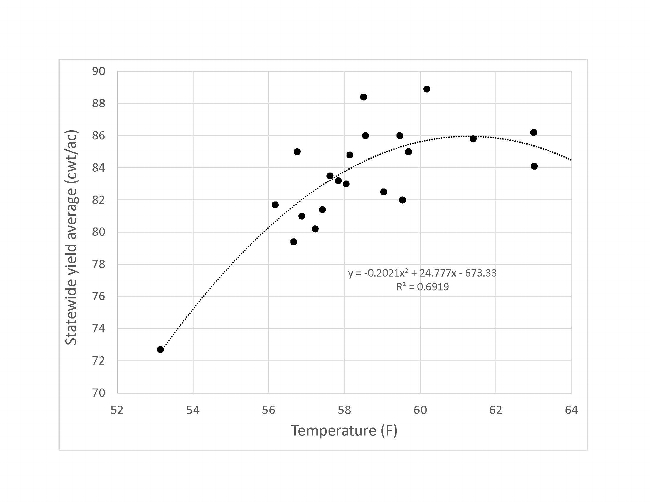UCANR: Safeguarding abundant and healthy food for all Californians
- Author: Bruce Linquist
The period between panicle initiation (PI) and heading is critical with respect to grain formation. During this time, cold temperatures can result in pollen sterility as the plants go through meiosis. Pollen sterility results in blanking. Nighttime temperatures below 58 oF can result in sterility. The Figure shows the relationship between average low temperatures during booting and statewide yields. Data are from 1992 to 2018. The data represent the average low temperature for a 15-day period beginning about one week after panicle initiation to one week before heading.
Varietal selection is important to minimize blanking. Varieties such as M105 and M206 are more cold tolerant than M209, for example. However, all varieties can be negatively affected by cold temperatures during this period. One way to help minimize the damage is to raise the flood water height in the field during this time to 6-8 inches (or more). The water acts as a blanket and protects the emerging panicle from cold temperatures.
This sensitive period during booting usually occurs in July. For rice planted in mid-May, the critical period is the last two weeks of July. I realize as I write this that it may already be a bit late for many growers. However, I am looking at the forecast and seeing nighttime temperatures in the mid-50s over the next few days in areas south of highway 20.


No comments:
Post a Comment